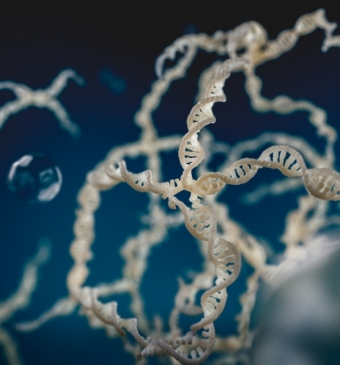
“A watched pot never boils,” as the saying goes, but that was not the case for UC Santa Barbara researchers watching a “pot” of liquids formed from DNA. In fact, the opposite happened.
Recent advances in cellular biology have enabled scientists to learn that the molecular components of living cells (such as DNA and proteins) can bind to each other and form liquid droplets that appear similar to oil droplets in shaken salad dressing. These cellular droplets interact with other components to carry out basic processes that are critical to life, yet little is known about how the interactions function. To gain insight into these fundamental processes, the researchers used modern methods of nanotechnology to engineer a model system — a liquid droplet formed from particles of DNA — and then watched those droplets as they interacted with a DNA-cleaving enzyme.
Surprisingly, they found that, in certain cases, adding the enzyme caused the DNA droplets to suddenly start bubbling, like boiling water.
“The bizarre thing about the bubbling DNA is that we didn't heat the system; it’s as if a pot of water started boiling even though you forgot to turn on the stove,” said project co-leader Omar Saleh, a UC Santa Barbara professor of materials and bioengineering. However, the bubbling behavior didn’t always occur; sometimes adding the enzyme would cause the droplets to shrink away smoothly, and it was unclear why one response or the other would occur. read more



